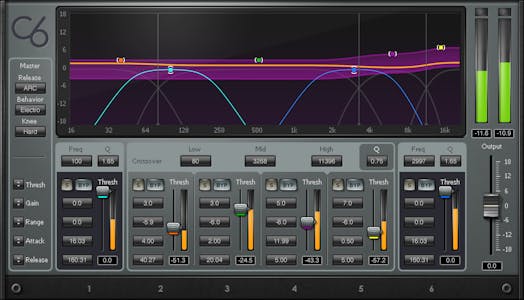Sidechain compression is a powerful technique used in music production to create dynamic and impactful mixes. It is commonly used to duck or control the volume of one track based on the level of another track. In this article, we will dive deep into understanding sidechain compression in Ableton Live, a popular digital audio workstation (DAW) among producers and musicians.
What is Sidechain Compression?
Sidechain compression is a specific type of compression where the audio signal on one track triggers the compression on another track. This technique is often used to make room for the kick drum in a mix by reducing the volume of other elements, such as bass or pads, whenever the kick drum hits.
Sidechain compression can also be used creatively to add a pumping or rhythmic effect to a track. It can be heard in genres like EDM, where the bassline or other elements are rhythmically “sucked in” or pulsate in sync with the kick drum.
Setting Up Sidechain Compression in Ableton Live
Ableton Live provides a user-friendly way to set up sidechain compression using its built-in Compressor device. Here are the steps to configure sidechain compression in Ableton Live:
- Insert the Compressor device on the track you want to apply sidechain compression to.
- Click on the “Sidechain” button on the Compressor device.
- Choose the source track that will trigger the compression from the drop-down menu.
- Adjust the threshold, ratio, attack, and release settings according to your desired effect.
By adjusting the threshold, you determine the level at which the sidechain compression is activated. The ratio control sets the amount of compression applied, while the attack and release parameters determine how quickly the compression reacts and recovers.
Applications of Sidechain Compression in Ableton Live
Sidechain compression can be used in various ways to improve your mix and create interesting sound effects. Here are a few applications:
1. Mixing The Kick And Bass
In many genres, the kick drum and bassline are the foundation of the track. By applying sidechain compression, you can ensure that the bassline ducks whenever the kick drum hits, preventing conflicting frequencies and creating a tight, defined mix.
2. Creating Pumping Effects
Sidechain compression can be used creatively to create pumping effects that add energy and movement to your tracks. By sidechaining elements like pads, synths, or vocals to the kick drum, you can achieve a rhythmic pulsating effect that elevates the overall groove of the song.
3. Clearing Space For Vocals
Sidechain compression can also be used to make room for vocals in a mix. By sidechaining other elements, such as guitars or pads, to the vocal track, you can automatically reduce their volume whenever the vocals are present, allowing the vocals to cut through the mix more effectively.
4. Dynamic Effects And Sound Design
Aside from traditional mixing applications, sidechain compression can be used for creative sound design. By sidechaining various effects, such as reverb or delay, to the source material, you can create interesting rhythmic patterns and dynamic textures.

Credit: www.waves.com
Tips for Using Sidechain Compression Effectively
While sidechain compression can be a powerful tool, it’s important to use it tastefully and in moderation. Here are some tips for using sidechain compression effectively in your Ableton Live projects:
- Experiment with different attack and release settings to find the right balance between the pumping effect and maintaining a natural sound.
- Use sidechain compression subtly to avoid creating a distracting or exaggerated effect.
- Automate the sidechain compression settings to add movement and variation throughout the song.
- Consider using different sidechain sources for different sections of the song to create dynamic transitions.
- Try using sidechain compression on effects like delays or reverbs to create interesting rhythmic textures.
Remember that sidechain compression is just one tool in your mixing and production arsenal. It’s essential to pair it with other techniques and tools to achieve a professional and polished mix.
Credit: www.kvraudio.com
Frequently Asked Questions Of Understanding Sidechain Compression In Ableton Live : Mastering Audio Dynamics
What Is Sidechain Compression In Music Production?
Sidechain compression is a technique where the input of a compressor is triggered by an external source, such as a kick drum, to create a pumping effect in the music.
How Does Sidechain Compression Work In Ableton Live?
In Ableton Live, sidechain compression works by using the sidechain input of a compressor to detect the audio signal from another track and then apply compression to the track it is placed on.
What Is The Benefit Of Using Sidechain Compression?
Using sidechain compression can help in creating a rhythmic effect, reducing clashing frequencies, and making sounds more pronounced in a mix.
Can Sidechain Compression Be Used For More Than Just Ducking?
Yes, sidechain compression can also be used creatively for creating breathing effects, rhythmic gating, and shaping the sound of instruments in a mix.
Conclusion
Understanding sidechain compression in Ableton Live opens up a world of creative possibilities in your music productions. Whether you’re aiming for a tight mix, a pumping effect, or creating dynamic transitions, sidechain compression can help you achieve your desired results. By following the steps outlined in this article and experimenting with different settings, you’ll be well on your way to mastering the art of sidechain compression in Ableton Live.